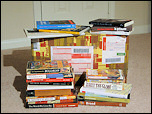An interesting book about William III, the Dutch stadtholder who became King of England in 1688, and more in general the relation between Holland and England in the 17th century.
The books deals extensively with the connections between the Netherlands and England at that time, such as in science, in the shared taste in gardens and painting and in political connections. Constantijn Huygens played a big role in developing this shared taste, according to the author.
The author makes the case that the societies in England and Holland were closely intertwined and mutually influenced each other. This in contrast to the publisher's comments on the cover and the strange subtitle which talk about "plundering" Holland's glory. The author writes: "...here was no conquest, here was an affinity -- a meeting of minds and sensibilities."
Ultimately, William III died without having any children and the English thrown went to his wife's sister. One benefit for the Dutch though, was that William and Mary sent back large amounts of (mostly Dutch) paintings from London to Het Loo, where many of them still are.
The book is well written, if a bit wordy at times, and provides a fascinating glimpse of life at the royals courts in Holland and England. The author used a wide range of source materials to enliven the book.
There are many fascinating stories and details in the book. It was great to read about Newton and Huygens and their work together, and to read about governor Winthrop in the British colony of Connecticut who was looking forward to read the book about the discovery of the planets of Saturn.
A recommended read for history buffs, especially if you have an interest in Western Europe in the 17th century.











